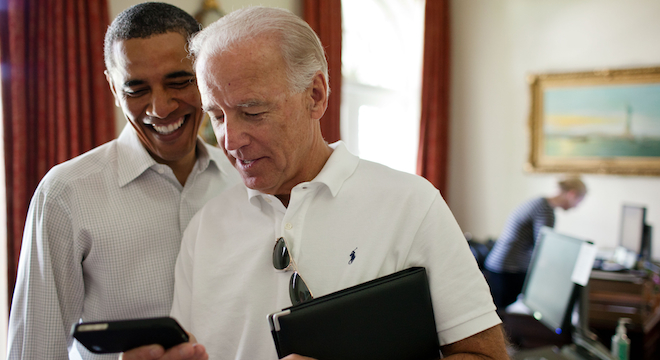President Obama will sign an executive order on Thursday designed to lower the costs and speed up the installation of broadband networks on and through federal property, the White House announced in a statement.
But that’s just the beginning of what the White House has in mind for the future of the Internet in this country. Another part of the plan, a massive public-private partnership called “US Ignite,” seeks to reprogram the very Web itself for an era of near-ubiquitous, high-speed broadband connectivity.
“We view US Ignite as playing a very important role in addressing one issue,” said Tom Kalil, deputy director for Policy at the White House Office of Science and Technology Policy, in a phone interview with TPM. “What are the applications that are going to drive the future of the Internet in the same way that search engines, web browsers and social media have transformed the Web today?”
Kalil posed hypothetical examples of such new applications, such as high-def video conferencing or 3D imagery of a patient’s beating heart that would allow a physician to give the patient a realtime, remote diagnosis, even if the two were separated across the country.
Specifically, US ignite will seek to spur development of at least 60 new prototype applications that leverage high-speed broadband networks capable of transmitting data at 1 gigabit-per-second, or “up to 100 times faster than today’s Internet,” according to the White House’s statement.
The US Ignite partnership already includes almost 100 partners, from 25 U.S. cities to 60 national research universities to numerous leading telecom and tech companies, including Comcast, Cisco, HP and Juniper, which the White House says have signed on to offer “programming” support, to major wireless providers Verizon and Comcast, which will develop a high-speed broadband network in select pilot cities.
Meanwhile, other federal agencies including the National Science Foundation, the Departments of Commerce and Agriculture, the Federal Communications Commission and the Department of Defense are all also participating in the program to various extents, with the NSF taking the lead in “committing $20 million to prototype and deploy new technologies” for the new high-speed broadband network.
NSF is also partnering with the Mozilla Foundation, makers of the Firefox web browser, on Mozilla Ignite, a public competition with $500,000 in prize money that asks developers to come up with “apps from the future” that “can revolutionize healthcare, education, public safety, energy and more.” The competition begins today with an open call for idea submissions, which Mozilla says it will seed with development money separate from that of the prizes.
“Mozilla believes in the power of the open internet and the power of distributed, community-based innovation,” said Mozilla’s Executive Director, Mark Surman, in a Mozilla blog post. “This is an invitation to designers, developers and civic thinkers to create software that shapes the future and helps their communities.”
The White House has not given a total cost estimate for how much money the government and private companies are collectively sinking into the US initiative, but the program doesn’t call for much new spending on its own, rather, it consolidates a number of formerly independent efforts by federal agencies and companies under one umbrella and under one goal: Prepare the country for an age when the Internet is way faster than what most users currently experience.
First, though, more users need to gain access. Broadband market penetration has plateaued at 68 percent of the American population compared to 65 percent before Obama took office, putting a major hitch in President Obama’s stated in goal in his 2011 State of the Union Address to get high-speed wireless coverage to 98 percent of Americans by 2016, conducive with the FCC’s National Broadband Plan.
“More than 90 percent of households currently have the ability to subscribe to broadband,” said Kalil, “But only 68 percent actually do, in part due to affordability issues.”
Kalil said that federal agencies were already working on this, pointing to the FCC’s “Connect to Compete” initiative, announced in May 2011, which seeks to provide low cost laptops to families that qualify for free or reduced school lunches, among other measures.
That’s also where the President’s new executive order comes in: It will require all agencies in charge of managing federal properties — which includes roads, federal buildings and other land totaling 30 percent of the nation, as the Hill points out — to move toward a common approval process for greenlighting private broadband infrastructure projects, away from the currently disparate approval approaches pursued by each agency.
Furthermore, the White House’s plan for installation of new ground-based broadband lines will be coordinated with other planned street construction projects, “dig once,” to avoid having to rip up the roads twice, which the Department of Transportation says can shave up to 90 percent off of “deployment costs.”
The plan also calls for those in charge of new broadband projects that are to be installed on federal lands to keep the public updated on their progress at the website permits.performance.gov.
“Building a nationwide broadband network will strengthen our economy and put more Americans back to work,” President Obama said in a statement on Wednesday. “By connecting every corner of our country to the digital age, we can help our businesses become more competitive, our students become more informed and our citizens become more engaged.”






